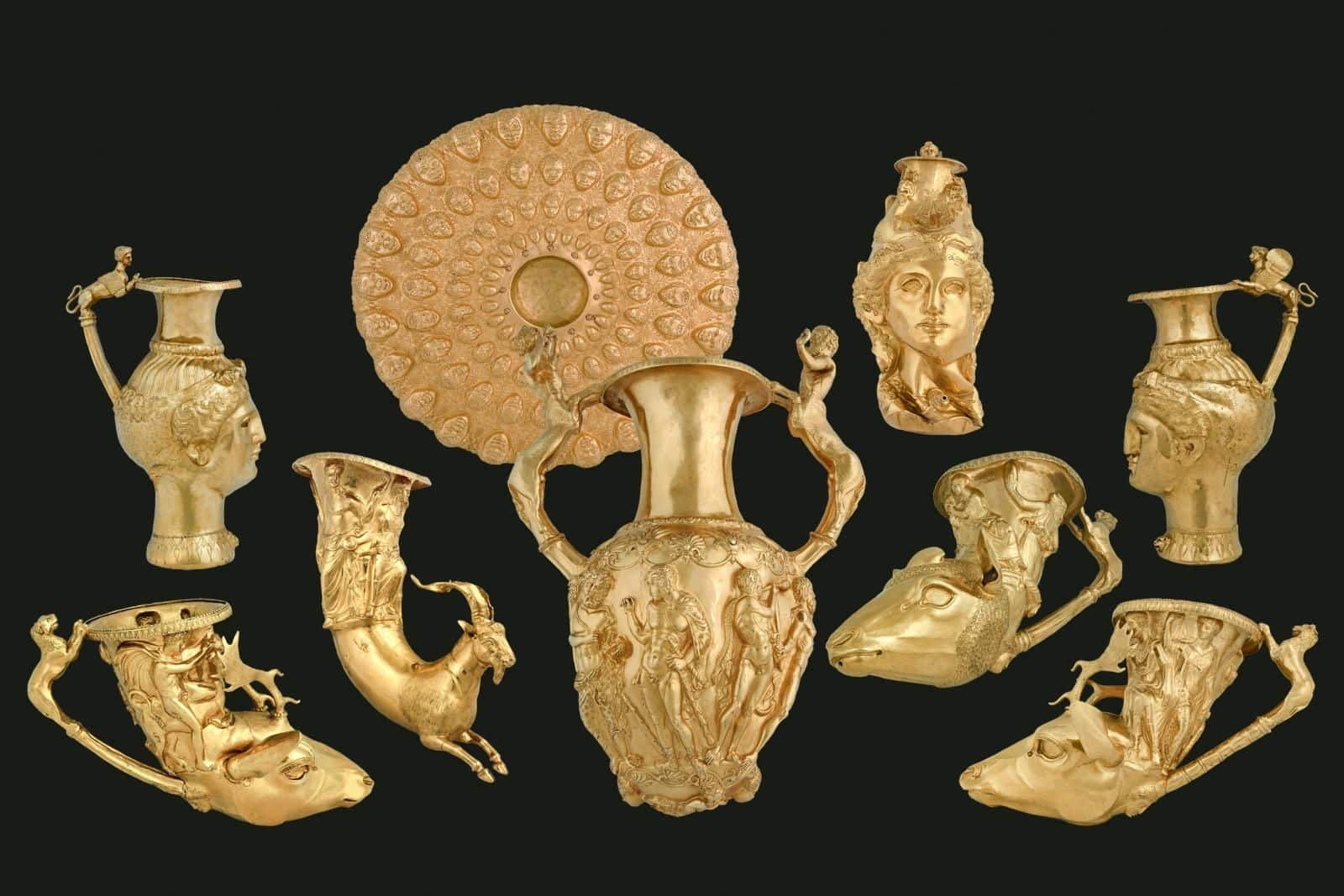Luxury and Power: Persia to Greece in London

The British Museum’s latest exhibition, “Luxury and Power: Persia to Greece”, offers a fascinating insight into the complex relationship between Persia and Greece over 500 years.
As you walk through the exhibition, you’re greeted by a pair of sculpted heads – an ancient Persian and the Greek god Apollo – that symbolize the polarity that has defined global history. However, the reality was more complicated than a simple binary struggle between the two cultures.

Panagyurishte Treasure, gold, Bulgaria, about 300 BC. Photo © Todor Dimitrov, National Museum of History, Bulgaria.
A star loan, the extraordinary Panagyurishte Treasure from Bulgaria is an exquisite example of ancient metalworking that demonstrates the influence of Persian and Greek luxury in ancient Thrace (a region that included parts of modern Bulgaria, Greece and Turkey). The Treasure consists of nine richly decorated gold vessels with a combined weight of over 6kg – eight rhyta used to pour wine and one bowl to drink it.
The exhibition is centered on the theme of luxury, a word associated with the east and Persian power, and it covers three sections – a thesis, antithesis, and synthesis. The first section offers a taste of the Persian empire, with a relief of Darius I worshipping Anubis in Egyptian style. The second section shows how classical Athens wrestled with Persian artistic influence while mocking the defeated empire. Finally, the two cultures merge as Alexander the Great conquers Persia and embraces its ways.

At the heart of each section are huge, luxurious drinking cups known as rhytons, shaped like horns, made of gold or silver, and featuring bulls, griffins, and human portraits. These Persian banqueting vessels were fantastic to drink from, but it was considered vulgar and ostentatious to drink from a bulbous golden horn in classical Athens, which instead made rhytons out of clay.
The exhibition demonstrates how ceramicists and painters turned the opulent Persian rhyton into pottery in the shape of ram and pig heads, painted red, white, and black. This confirms the traditional view that Greek and Persian culture were opposites, with Athens rejecting Persian magnificence. However, things change when Alexander the Great comes on stage. He defeated Persia, burned its great capital Persepolis, and created a new Greek empire from Egypt to Afghanistan. The Hellenistic era that followed comes across as a fascinating, seductive cultural melting pot, where stiff classicism melts into “oriental” splendor.

The terminals of this gold armlet are shaped like two leaping griffins. Their bodies are divided into tiny cells which were once inset with vividly coloured precious stones or glass. Persian goldsmiths were experts in this technique and often used it to decorate jewellery and drinking vessels.
At the heart of the Hellenistic era are gold drinking cups and platters from the Panagyurishte Treasure, lent by Bulgaria’s National Museum of History. They brilliantly combine Greek and Persian themes in an aesthetic free-for-all, with naked gods and demigods sporting on cups with bull faces, all in glinting gold.
Overall, the exhibition offers a clear and concise introduction to 500 years of Persian and Greek history, centered on the theme of luxury. While it doesn’t bring history to life like Herodotus, it offers a fascinating insight into how the two cultures interacted, with the Hellenistic era offering a glimpse into a seductive cultural melting pot.
If you’re in London between 4 May and 13 August, be sure to check it out at the British Museum.
Website: https://www.britishmuseum.org/exhibitions/luxury-and-power-persia-greece




I visited it a week ago. It’s amazing! Highly recommend! Also don’t forget to visit Room 52 in the British Museum devoted to Ancient Iran. Greetings from Bulgaria ✌️